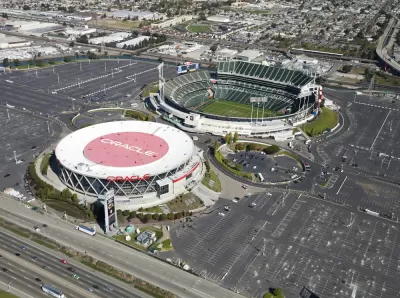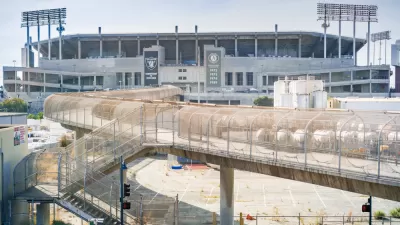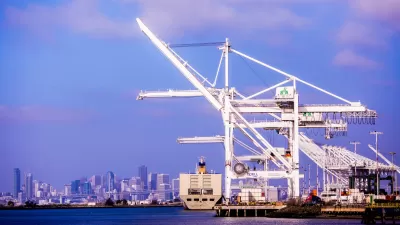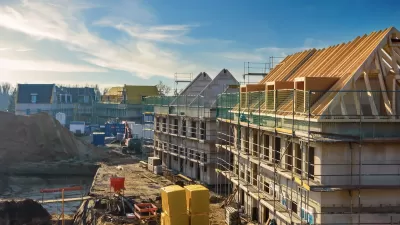On top of plans to build a new ballpark, the Oakland Athletics have proposed developing 6,000 units of housing. Half would be located at the new site near Jack London Square, and the other half at the current Oakland Coliseum site.

With negotiations in progress over the Oakland Athletics' move to a new ballpark, the baseball team wants to follow the Giants into the housing development business. The team's current home, Bill Shaikin writes, "is an uncomfortable throwback to the days when baseball and football teams shared generic stadiums lacking in charm and good sight lines."
Between them, the Athletics, the Giants, and the Rams have proposed to build 10,000 units over the next 13 years, Shaikin continues. "The Giants paid for their own ballpark. They now are building 1,500 homes within their Mission Rock neighborhood, across McCovey Cove from the ballpark, with shops, offices, and parkland included in the project, targeted for completion in 2025."
Oakland Mayor Libby Schaaf is largely supportive of the A's proposal to build a new waterfront ballpark (possibly with a gondola), despite criticism the plan received from some quarters. "What makes me optimistic [about the plan to build homes] is that a team is not judged just by its monetary profits. It is judged by its contributions to its community," she said.
After their move, the A's want to redevelop the Oakland Coliseum site. "The team worked with community groups to prepare a plan that would include a park, youth sports facilities, an events center, shops, restaurants, offices and a technology campus," Shaikin writes. According to Athletics president Dave Kaval, the team's current proposal could potentially house 20,000 people.
FULL STORY: Oakland’s Athletics need a home. They may get one — and provide 6,000 more

Planetizen Federal Action Tracker
A weekly monitor of how Trump’s orders and actions are impacting planners and planning in America.

Restaurant Patios Were a Pandemic Win — Why Were They so Hard to Keep?
Social distancing requirements and changes in travel patterns prompted cities to pilot new uses for street and sidewalk space. Then it got complicated.

Map: Where Senate Republicans Want to Sell Your Public Lands
For public land advocates, the Senate Republicans’ proposal to sell millions of acres of public land in the West is “the biggest fight of their careers.”

Maui's Vacation Rental Debate Turns Ugly
Verbal attacks, misinformation campaigns and fistfights plague a high-stakes debate to convert thousands of vacation rentals into long-term housing.

San Francisco Suspends Traffic Calming Amidst Record Deaths
Citing “a challenging fiscal landscape,” the city will cease the program on the heels of 42 traffic deaths, including 24 pedestrians.

California Homeless Arrests, Citations Spike After Ruling
An investigation reveals that anti-homeless actions increased up to 500% after Grants Pass v. Johnson — even in cities claiming no policy change.
Urban Design for Planners 1: Software Tools
This six-course series explores essential urban design concepts using open source software and equips planners with the tools they need to participate fully in the urban design process.
Planning for Universal Design
Learn the tools for implementing Universal Design in planning regulations.
Heyer Gruel & Associates PA
JM Goldson LLC
Custer County Colorado
City of Camden Redevelopment Agency
City of Astoria
Transportation Research & Education Center (TREC) at Portland State University
Camden Redevelopment Agency
City of Claremont
Municipality of Princeton (NJ)





























